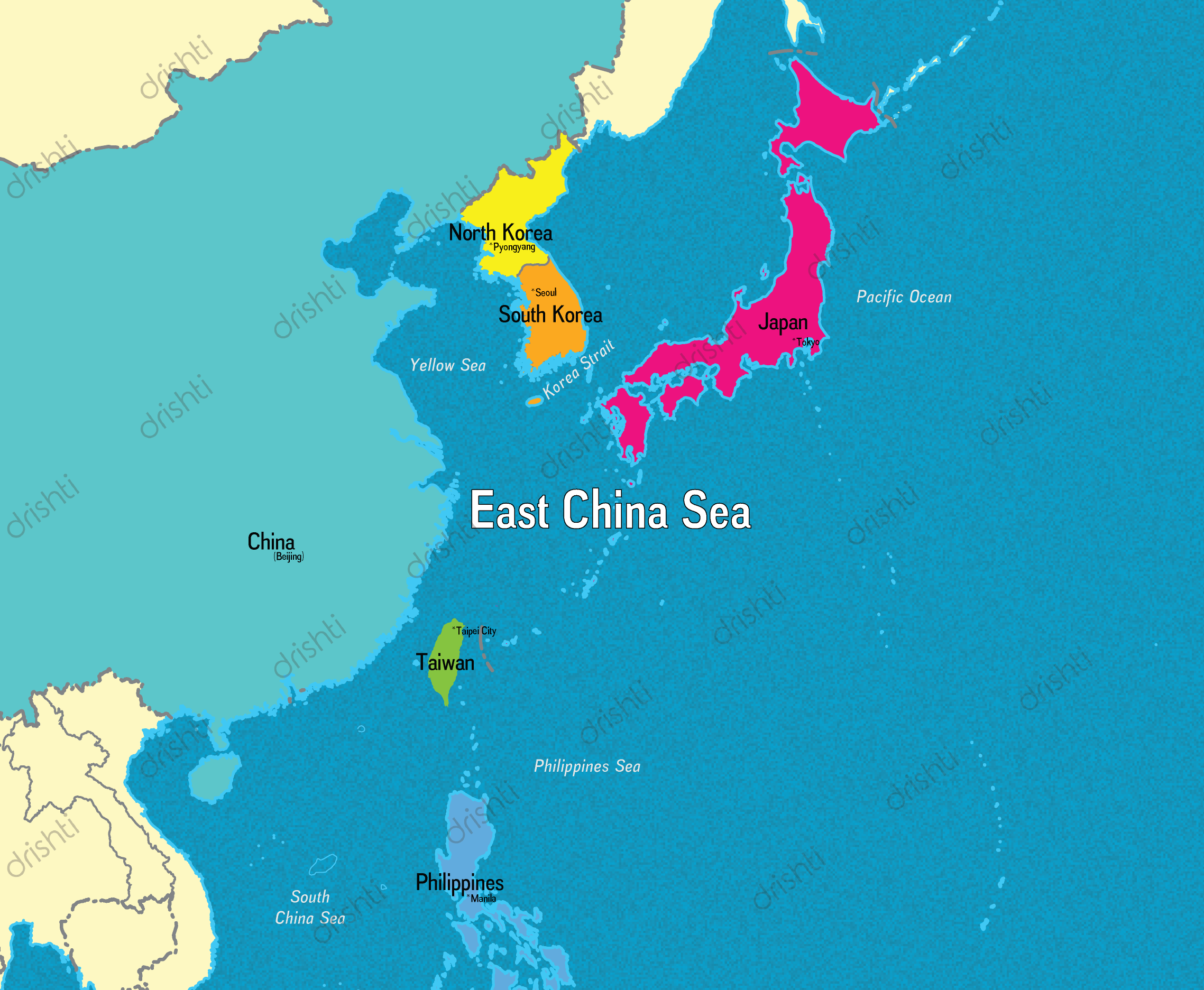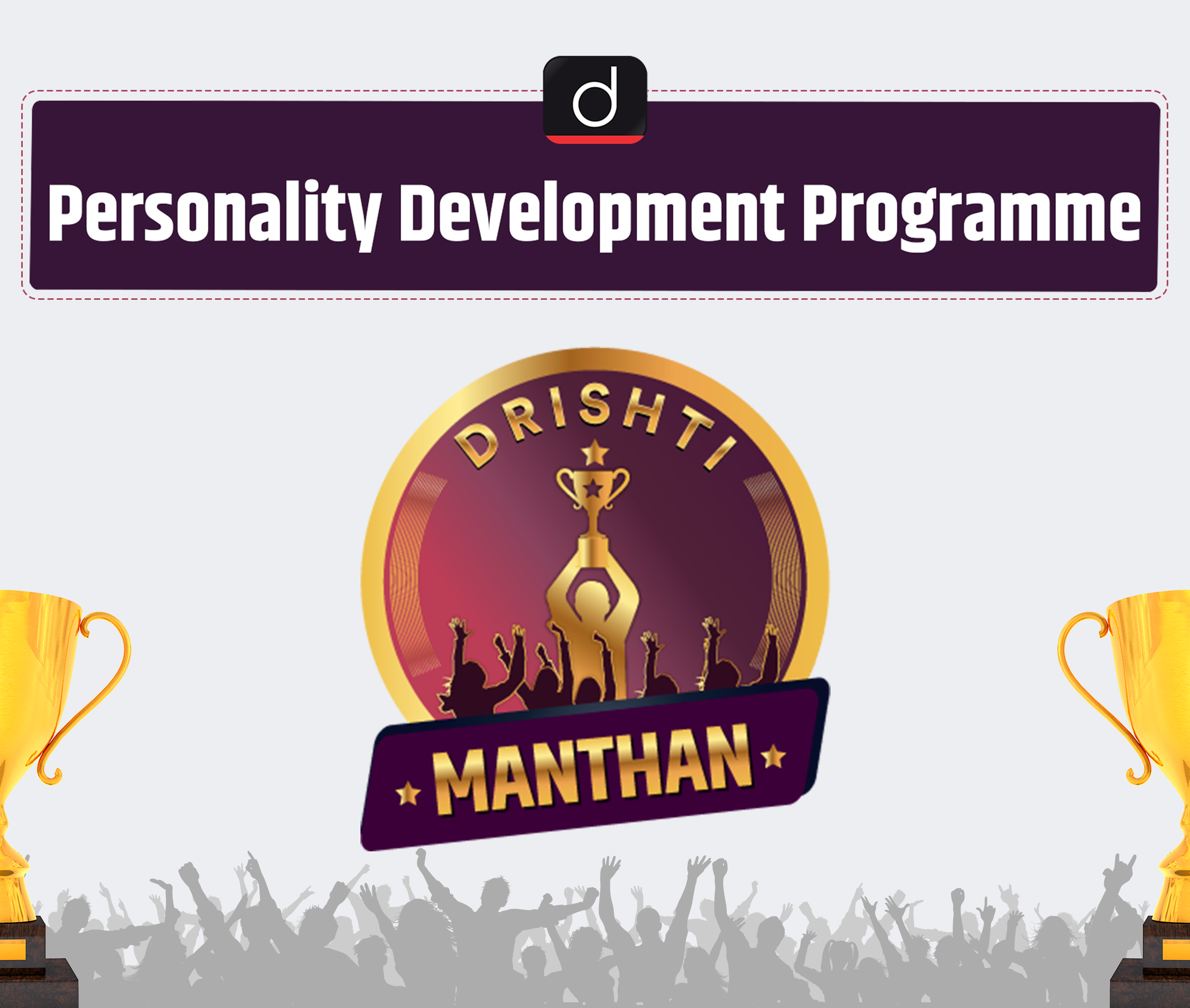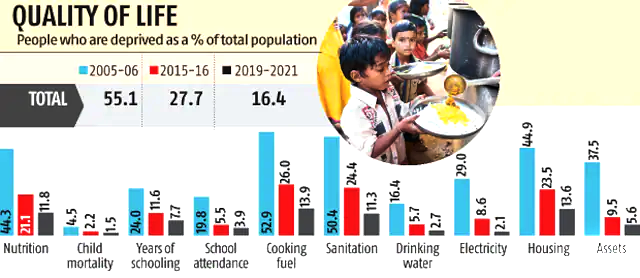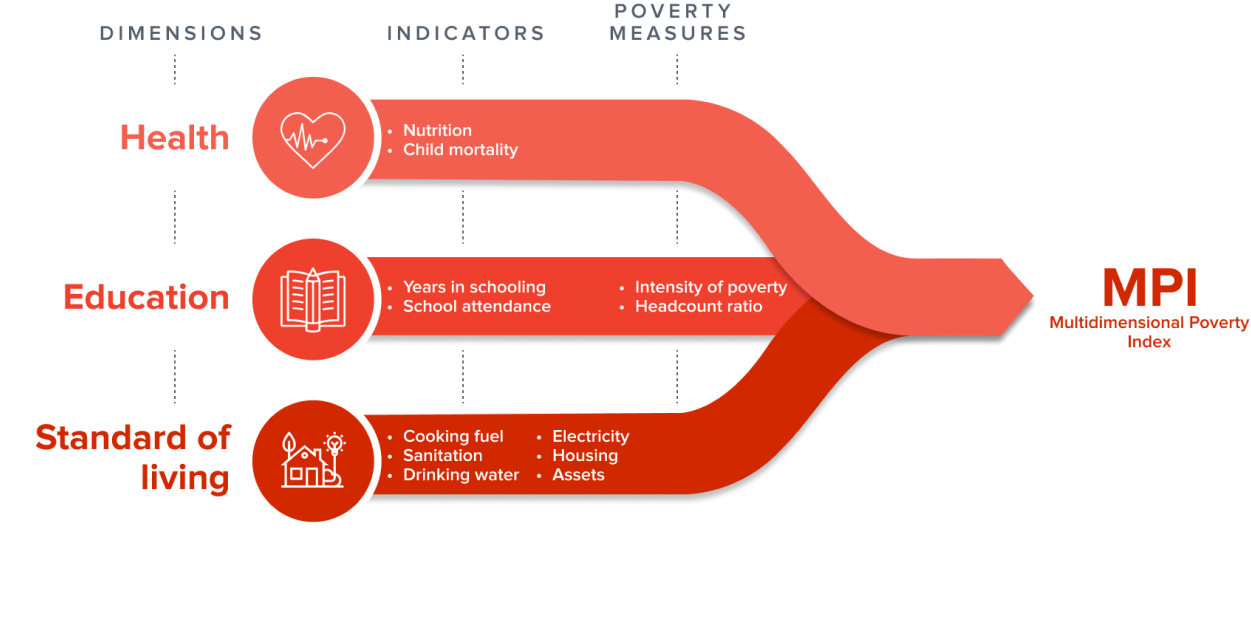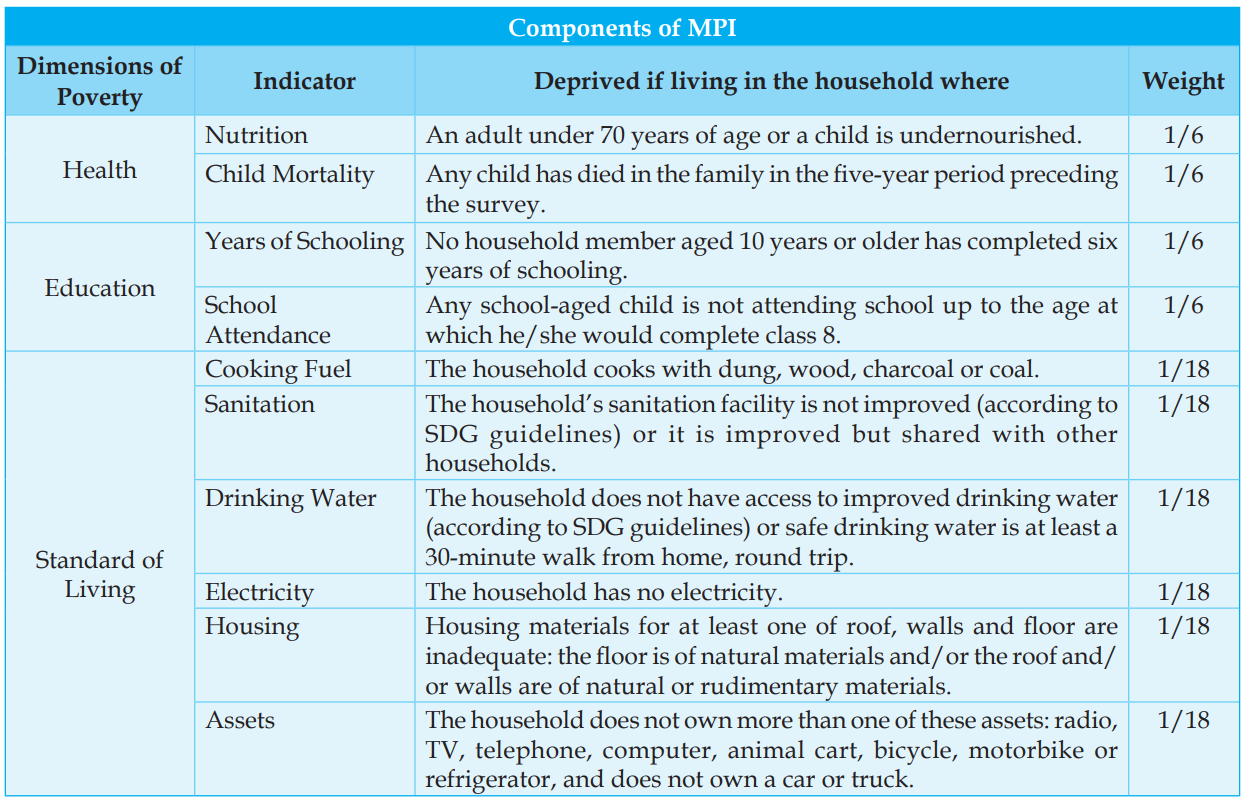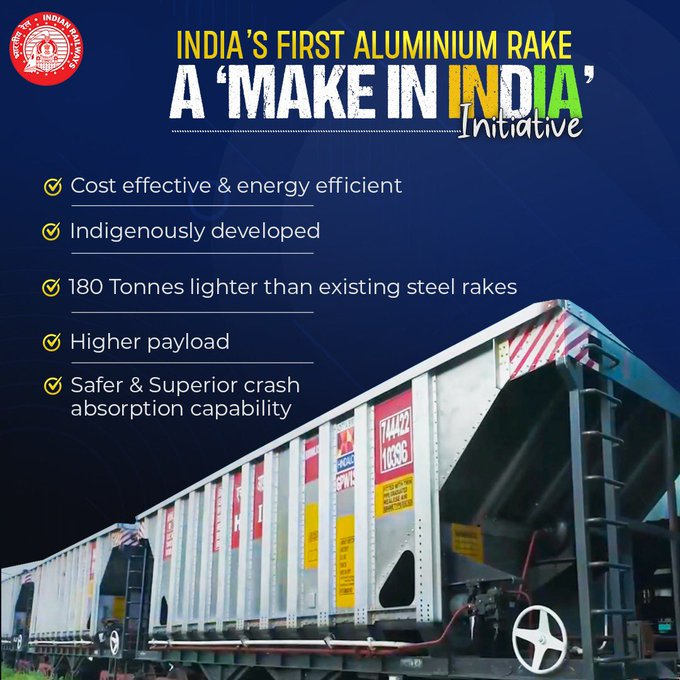Maps
East China Sea
Key Points
- Physical Geography:
- A part of the Pacific Ocean and is a marginal sea in the east of China.
- Bordering Countries: South Korea, Japan, the Republic of China (Taiwan) and the People's Republic of China.
- Towards the south of it is the South China Sea and to the west is the Asian continent.
- Connects with the Sea of Japan through the Korea Strait and opens to the north into the Yellow Sea.
- Recent Related Event:
- ContestedSenkaku/Diaoyu Islands: Tensions between China and Japan have risen over the contested Senkaku/Diaoyu islands that lies in this sea.


Infographics
Social Justice
Global Multidimensional Poverty Index MPI 2022
For Prelims: Global Multidimensional Poverty Index (MPI) 2022, United Nations Development Programme
For Mains: State of Poverty in India and Related steps taken
Why in News?
Recently, the Global Multidimensional Poverty Index (MPI) 2022 was released by the United Nations Development Programme (UNDP) and the Oxford Poverty and Human Development Initiative (OPHI).
What are the Key Highlights of the Index?
- Global Data:
- 1.2 billion people are multidimensionally poor.
- Nearly half of them live in severe poverty.
- Half of poor people (593 million) are children under age 18
- The number of poor people is highest in Sub Saharan Africa (579 million), followed by South Asia (385 million). The two regions together are home to 83% of poor people.
- 1.2 billion people are multidimensionally poor.
- Impact of Pandemic:
- The data do not, however, reflect post-pandemic changes.
- According to the report the Covid-19 pandemic could set back the progress made in poverty reduction globally by 3-10 years.
- The most recent data on food security from the World Food Programme suggest that the number of people living in food crises or worse increased to 193 million in 2021.
What are the Key Findings about India?
- Data:
- India has by far the largest number of poor people worldwide at 22.8 crore, followed by Nigeria at 9.6 crore.
- Two-thirds of these people live in a household in which at least one person is deprived of nutrition.
- Reduction in Poverty:
- The incidence of poverty fell from 55.1% in 2005/06 to 16.4% in 2019/21 in the country.
- The deprivations in all 10 MPI indicators saw significant reductions as a result of which the MPI value and incidence of poverty more than halved.
- As many as 41.5 crore people moved out of poverty in India during the 15-year period between 2005-06 and 2019-21.
- Improvement in MPI for India has significantly contributed to the decline in poverty in South Asia.
- South Asia now has not the lowest number of poor people than Sub-Saharan Africa.
- The incidence of poverty fell from 55.1% in 2005/06 to 16.4% in 2019/21 in the country.
- Relative Reduction in Poverty:
- The relative reduction from 2015/2016 to 2019/21 was faster: 11.9% a year compared with 8.1% from 2005/2006 to 2015/2016.
- Performance of States:
- Bihar, the poorest state in 2015-16, saw the fastest reduction in MPI value in absolute terms.
- The percentage of poor in Bihar fell from 77.4 % in 2005-06 to 52.4 % in 2015-16 and further to 34.7 % in 2019-21.
- However, in relative terms, the poorest states have not quite caught up.
- Of the 10 poorest states in 2015/2016, only one (West Bengal) have emerged out of the list in 2019-21.
- The rest (Bihar, Jharkhand, Meghalaya, Madhya Pradesh, Uttar Pradesh, Assam, Odisha, Chhattisgarh and Rajasthan) remain among the 10 poorest.
- Across states and union territories in India, the fastest reduction in relative terms was in Goa, followed by Jammu and Kashmir, Andhra Pradesh, Chhattisgarh and Rajasthan.
- Bihar, the poorest state in 2015-16, saw the fastest reduction in MPI value in absolute terms.
- Poverty among Children:
- Poverty among children fell faster in absolute terms, although India still has the highest number of poor children in the world.
- More than one in five children in India are poor compared with around one in seven adults.
- Reduction of Poverty Region Wise:
- The incidence of poverty fell from 36.6% in 2015-2016 to 21.2% in 2019-2021 in rural areas and from 9.0% to 5.5% in urban areas.
What is the Global Multidimensional Poverty Index?
- About:
- The index is a key international resource that measures acute multidimensional poverty across more than 100 developing countries.
- It was first launched in 2010 by the OPHI and the Human Development Report Office of the UNDP.
- The MPI monitors deprivations in 10 indicators spanning health, education and standard of living and includes both incidence as well as intensity of poverty.
- MPI Indicators and Dimensions:
- A person is multidimensionally poor if she/he is deprived in one third or more (means 33% or more) of the weighted indicators (out of the ten indicators). Those who are deprived in one half or more of the weighted indicators are considered living in extreme multidimensional poverty.
UPSC Civil Services Examination Previous Year Question (PYQ)
Prelims
Q. The Multi-dimensional Poverty Index developed by Oxford Poverty and Human Development Initiative with UNDP support covers which of the following? (2012)
- Deprivation of education, health, assets and services at household level
- Purchasing power parity at national level
- Extent of budget deficit and GDP growth rate at national level
Select the correct answer using the codes given below:
(a) 1 only
(b) 2 and 3 only
(c) 1 and 3 only
(d) 1, 2 and 3
Ans: (a)
Exp:
- The Multidimensional Poverty Index (MPI) reflects the deprivations that a poor person faces simultaneously with respect to education, health and living standards, as reflected in the following table. Hence, statement 1 is correct.
- Therefore, option (a) is the correct answer.
Mains
Q. Despite Consistent experience of high growth, India still goes with the lowest indicators of human development. Examine the issues that make balanced and inclusive development elusive. (2016)


Indian Polity
Use of Regional Language in Legal System
For Prelims: Article 343, President, Article 348
For Mains: Use of Regional Language in Legal System
Why in News?
Recently, the Prime Minister inaugurated the All-India Conference of Law Ministers and Law Secretaries via video conference.
- While Inaugurating the Conference, PM bats for use of regional languages in the legal system to bring ease of justice.
- He stressed that new laws should be written in a clear manner and in regional languages to bring in “ease of justice,” so that even the poor can easily understand them and legal language doesn’t become a barrier for citizens.
What is the Background of Languages in the Legal System?
- Background:
- The language used in Courts in India has seen a transition over centuries with the shift from Urdu to Persian and Farsi scripts during the Mughal period which continued in subordinate courts even during the British Rule.
- The British introduced a codified system of law in India with English as the official language.
- Post-independence, Article 343 of the Constitution of India provides that the official language of the Union shall be Hindi in the Devanagari script.
- However, it mandated that the English language will continue to be used for all official purposes of the Union for 15 years from the commencement of the Constitution of India.
- It further provides that the President may, during the said period, by order to authorise the use of the Hindi language for any official purpose of the Union, other than the English language.
- Constitutional Provisions:
- Article 348(1)(a) states that unless Parliament by law provides otherwise, all proceedings before the Supreme Court and in every High Court shall be conducted in English.
- Article 348(2) provides further that notwithstanding the provisions of Article 348(1), the Governor of a state may, with the previous consent of the President, authorise the use of Hindi or any other language used for any official purpose, in proceedings in the High Court.
- States of Uttar Pradesh, Bihar, Rajasthan and Madhya Pradesh have already authorised the use of Hindi in proceedings before their respective high courts and taking a cue, Tamil Nadu is also working in that direction – to authorise the use of Tamil before its high court.
- A further provision states that nothing in this clause would apply to any judgement, decree, or order made by the High Court.
- Therefore, the Constitution recognizes English as the primary language of the Supreme Court and the High Courts, with the caveat that when some other language is used in the proceedings of High Courts, judgments of the High Courts must be delivered in English.
- Official Languages Act 1963:
- It empowers the Governor of a state to, with previous consent of the President, authorise the use of Hindi/the official language of the state, in addition to English, for the purpose of any judgement, decree or order passed by the High Court of that state.
- It further provides that where any judgement/decree/order is passed in any such language it shall be accompanied by a translation of the same in English.
- Read with the constitutional provisions, it is clear that primacy is given to English even by this Act.
- The Official Languages Act makes no mention of the Supreme Court, where English is the only language in which proceedings are conducted.
- Language of Subordinate Courts:
- The language of all courts subordinate to High Courts generally remains the same as the language on the commencement of the Civil Procedure Code 1908, till the state government determines.
- There are two provisions regarding the use of language in subordinate courts.
- Under Section 137 of the Code of Civil Procedure, the language of the district courts shall be similar to the language of the act.
- The state government has the power to declare any regional language as an alternative for the proceedings of the court.
- However, judgments, orders, and decree may be passed by the magistrate in English.
- The recording of the evidence shall be done in the prevailing language of the state.
- In case of a pleader being unacquainted with English, a translation into the language of the court shall be supplied to him on his request and the court shall bear such costs.
- Section 272 of the Code of Criminal Procedure 1973, states that the State government shall determine the language of all courts other than the High Courts. So, broadly it means that the language used in the district courts shall be in the regional language as the state government directs.
What are the Reasons for Using English Language in Legal System?
- About:
- Just like cases from all over the country come to the Supreme Court, judges and lawyers of the Supreme Court also come from all parts of India.
- Judges can hardly be expected to read documents and hear arguments in languages with which they are not familiar.
- Without the use of English, it would be impossible to discharge their duty. All judgments of the Supreme Court are also delivered in English.
- Though, in 2019, the Court introduced an initiative to translate its judgments into regional languages, it is rather a tall order given the sheer volumes of judgments which the Court delivers.
- Significance:
- Uniformity: At present the judicial system in India is well developed, integrated and uniform throughout the country.
- Easy Access: Lawyers as well as the judges have the benefit of easy access to the views of other high courts on similar legislations and other matters of law and constitution.
- Seamless Transfers: Presently, the judges from one high court are transferred to other high courts seamlessly.
- Unified Structure: This has given a unified structure to the Indian judicial system. The hallmark of any robust legal system is that the law should be certain, precise and predictable and we have nearly achieved that in India.
- Link Language: To a very great extent, we owe it to the English language, which has served as a link language for India where we have about two dozen official state languages.
Way Forward
- The need of the hour is to encourage local language in courts, which will not only increase the confidence of common citizens in the justice system, but they will feel more connected to it.
- India celebrates the 75th anniversary of Independence, focus should be on creation of a judicial system where justice is easily available, is quick and for everyone.
- The confluence of the judiciary and legislature will prepare the roadmap for an effective and time-bound judicial system in the country.


Indian Economy
RTI Exemption for Banks
For Prelims: RTI Act 2005, NPA, Right to Privacy.
For Mains: Reasons for Banks Seeking Exemption from RTI
Why in News?
Recently, the Supreme agreed to examine a plea by various Banks for the exemption from RTI (Right to Information).
- Various Public and Private Sector banks want to be exempted from disclosing an array of financial information relating to Non-Performing Assets (NPAs), losses from trading operations, show-cause notices, and penalties.
What is the Issue?
- The legal battle for the disclosure of inspection reports and defaulters list started when RTI activist Jayantilal Mistry sought information under RTI Act, 2005 from the RBI about a Gujarat-based cooperative bank in 2010. The matter went up to the SC as Mistry’s appeals were not entertained by several layers of the RTI process.
- In 2015, the Supreme Court had come down on the RBI for trying to keep the inspection reports and defaulters list confidential, paving the way for the public disclosure of such reports of the RBI, much against the wishes of the banking sector.
- The SC had said the RBI has no legal duty to maximize the benefit of any public sector or private sector bank, and thus there is no relationship of ‘trust’ between them. It added that the RBI was duty-bound to uphold the public interest by revealing these details under RTI.
- The central bank then allowed making such reports public following the Supreme Court order.
- Now the SC says, the 2015 judgment did not take into consideration the aspect of balancing the right to information and the right to privacy, and thus, the court is duty-bound to give banks an opportunity to argue their case on merits.
What is the Argument Provided by Banks?
- As banks are involved in dealing in money, they fear any adverse remarks — especially from the regulator RBI — will affect their performance and keep customers away.
- Banks are driven by the “trust and faith” of their clients that should not be made public.
- Banks also argued that privacy is a fundamental right, and therefore, should not be violated by making clients’ information public.
What is the RTI Act, 2005?
- About:
- Right to Information Act or RTI is a central legislation, which enables the citizens to procure information from a public authority.
- It provides the mechanism for obtaining information under the control of public authority so that transparency and accountability can be increased.
- Sec 8 of the RTI ACT: Sec 8 deals with exemption from disclosure of information.
- Information which would prejudicially affect the sovereignty and integrity of India
- Information which has been expressly forbidden to be published by any court of law
- Information, the disclosure of which would cause a breach of privilege of Parliament or the State Legislature.
- Information including commercial confidence, trade secrets or intellectual property, the disclosure of which would harm the competitive position of a third party, unless the competent authority is satisfied that larger public interest warrants the disclosure of such information
- Information available to a person in his fiduciary relationship, unless the competent authority is satisfied that the larger public interest warrants the disclosure of such information.
UPSC Civil Services Examination Previous Year Question (PYQ)
Q. “The Right to Information Act is not all about citizens’ empowerment alone, it essentially redefines the concept of accountability.” Discuss. (2018)

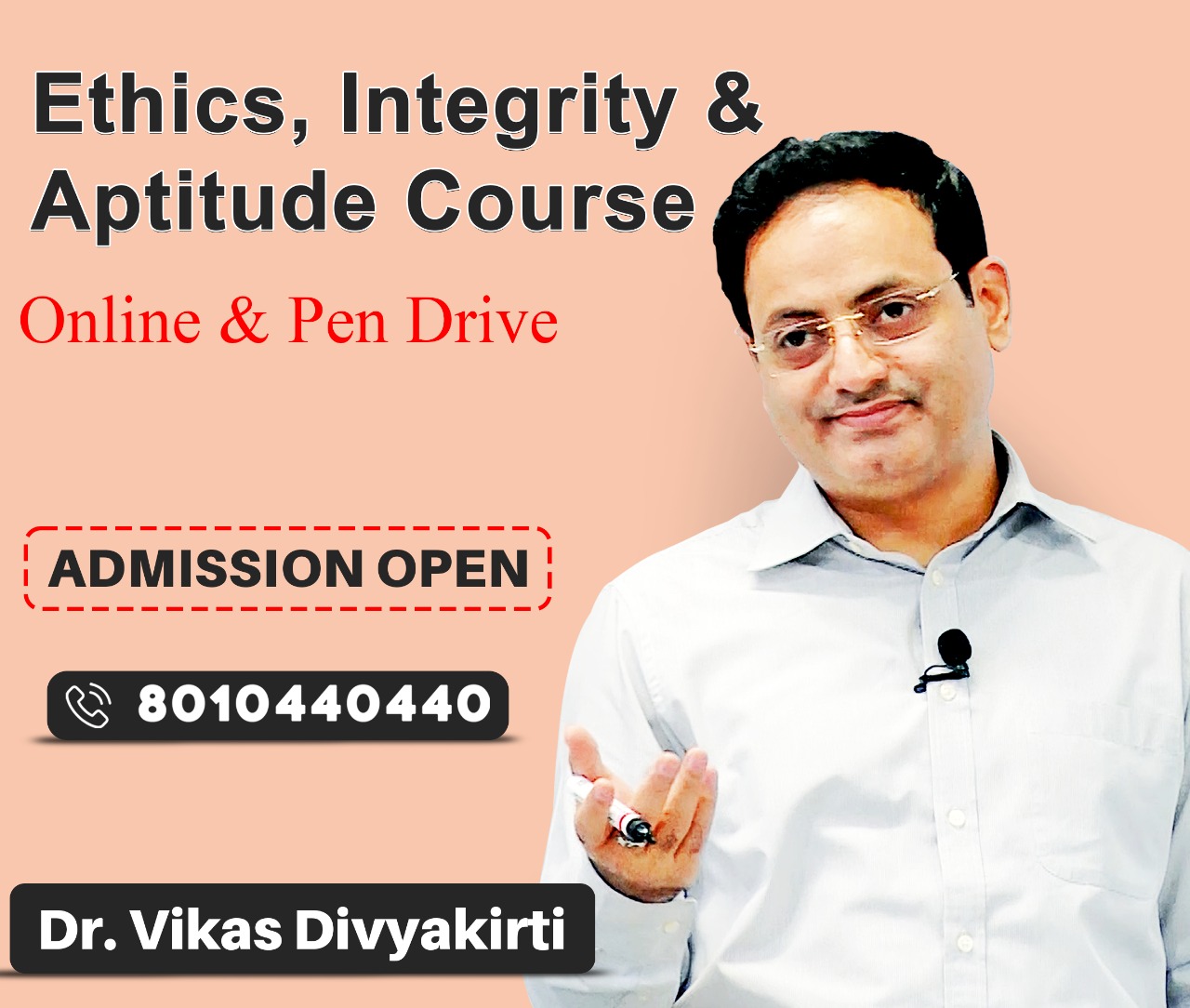
Agriculture
Organic Fertilisers
For Prelims: Organic Fertiliser, Organic compost, Cattle manures, Bio-fertilisers, Solid Waste, Biogas.
For Mians: Potential of Organic Fertilizers in India.
Why in News?
India's growth story on the path of economic reforms has transformed the country into one of the fastest-growing economies in the world. With the right policy interventions, India can become the hub of Organic Fertilizers production.
What is Organic Fertilizer?
- About:
- An organic fertilizer is a fertilizer that is derived from organic sources, including organic compost, cattle manures, poultry droppings and domestic sewage.
- Organic fertiliser can be categorised into two segments, according to government rules: Biofertilizer and Organic Manure.
- Bio-fertiliser:
- Bio-fertilisers are composed of living microorganisms attached to solid or liquid carriers and are useful for cultivable land, as these micro-organisms help in increasing the productivity of soil and / or crops.
- Examples: Rhizobium, Azospirilium, Azotobacter, Phosphobacteria, Blue Green Algae (BGA), Mycorhiza, Azolla.
- Bio-fertilisers are composed of living microorganisms attached to solid or liquid carriers and are useful for cultivable land, as these micro-organisms help in increasing the productivity of soil and / or crops.
- Organic manure:
- Organic manure, on the other hand, refers to partially decomposed organic matter like digestate from a biogas plant, compost and vermicompost, which provides nutrients to the soil / crops and improves yield.
What is the Potential of Organic Fertilisers in India?
- Utilizing Municipal Solid Waste:
- India produces more than 150,000 tonnes of municipal solid waste (MSW).
- Considering collection efficiency of 80% and organic part of MSW to be 50%, total organic waste generated per day in India comes to around 65,000 tonnes per day.
- Even if half of this is diverted to the biogas industry, the government can leverage this by reducing in import of fossils and fertilisers.
- Utilizing Biogas Effluents:
- There is also great value in the organic fertiliser also known as digestate, which is the biogas plant's effluent.
- Biogas can be utilised for heating, electricity and even vehicular purposes (after upgrading), whereas digestate can help realise the vision to have a second green revolution.
- Increase Soil Fertility:
- Digestate can provide organic carbon to the continuously depleting soil, apart from its standard nutrition value.
- In India at present, bio-fertiliser production is just over 110,000 tonnes (carrier-based 79,000 tonnes and liquid-based 30,000 tonnes) and 34 million tonnes of organic manure, composed of farmyard manure, city compost and vermicompost, among others.
- Popularity of Organic Farming:
- The popularity of organic farming has grown in the domestic market in recent years.
- The market size for Indian organic packaged food is expected to grow at a rate of 17% and cross Rs 871 million by 2021.
- The significant rise of this sector is linked to growing awareness about the harmful effects of synthetic fertiliser on soil, rising health concerns, expanding urban population base and an increased consumer expenditure on food goods.
- The popularity of organic farming has grown in the domestic market in recent years.
What are the Related Initiatives?
UPSC Civil Services Examination Previous Year Question (PYQ)
Q. Which feature of some species of blue-green algae helps promote them as bio-fertilizers? (2010)
(a) They convert atmospheric methane into ammonia which the crop plants can absorb readily
(b) They induce the crop plants to produce the enzymes which help convert atmospheric nitrogen to nitrates
(c) They have the mechanism to convert atmospheric nitrogen into a form that the crop plants can absorb readily
(d) They induce the roots of the crop plants to absorb the soil nitrates in larger quantities
Ans: (c)
Exp:
- Cyanobacteria or blue-green algae is an example of a bio-fertilizer, a type of organic fertilizer which contains living organisms and harnesses naturally occurring inputs like solar energy, nitrogen, and water to ensure soil fertility and plant growth
- Blue green algae is photoautotrophic microbes. They have specialised cells whcih utilises solar energy to reduce atmospheric N2 into Ammonia. Ammonia is used by plants for growth and increased production.
- Therefore, option (c) is the correct answer.


Geography
Coal Mines in India Under-Utilised: GEM Report
For Prelims: Coal Mines, Coal Crisis, Types of coal, Net Zero Emissions, Clean Energy
For Mains: Findings of GEM Report on Coal Utilization and its Impact
Why in News?
According to Global Energy Monitor (GEM) Report, India’s Coal Mines are severely under-utilized amid push for new ones.
- GEM is a firm that tracks fuel-source utilization globally. It studies the evolving international energy landscape, creating databases, reports, and interactive tools that enhance understanding.
What is the Background?
- In 2021, India experienced severe coal crises with more than 100 of 285 thermal power plants seeing coal stocks fall below the critical mark of 25% of the required stock, leading to power shortages in several States, including Andhra Pradesh, Jharkhand, Uttarakhand and Madhya Pradesh.
- The recently released Global Energy Monitor (GEM) report analyzed annual reports from Coal India, the world's largest coal producer, and its subsidiaries.
What are the Findings?
- New Coal Mines Increasing Risk of Displacement:
- This coal shortage prompted the government to start developing new coal projects, where 99 new coal mines projects are under the pipeline. These projects have the capacity to produce 427 million tonnes of coal annually (mtpa).
- This is despite India’s pledge to achieve net zero emissions by 2070.
- These projects will put 165 villages and 87,630 families at risk of displacement. And 41,508 of these families belong to Scheduled Tribes.
- This coal shortage prompted the government to start developing new coal projects, where 99 new coal mines projects are under the pipeline. These projects have the capacity to produce 427 million tonnes of coal annually (mtpa).
- Coal Mines Under-utilized thus Unnecessary:
- Since India’s coal mines use is severely underutilized so developing new projects to merely fulfill temporary coal shortage is unnecessary.
- India's coal mines use only two-thirds of their capacity on average, with some large ones using only 1%.
- Delay in Clean Energy Future:
- These new mines will increase India’s likelihood of stranded assets, delay a clean energy future—and in the process pose irreversible impacts on India’s rural communities and environments for the sake of economically precarious mining ventures.
- Exacerbate Water Shortage:
- Water shortages would be exacerbated by the new coal projects, increasing demand by 1,68,041 kilolitres per day.
- Of 427 MTPA in new capacity, 159 MTPA will be located in high-risk water zones, while 230 MTPA is planned for zones with extreme water risk.
Why is it Imperative to Move Away from Coal?
- The threat of global warming is looming large over the planet, and can bring about unprecedented natural calamities.
- An effective way to keep the danger at bay is to cut the use of fossil fuels — coal, natural gas and oil.
- About 80% of the world’s energy requirements are met by these three fuels.
- The worst culprit of them all is coal, which emits nearly twice as much carbon dioxide as natural gas and about 60% more than oil, on a kilogram-to-kilogram comparison.
- The consequence of these chemical reactions gains great significance because the power sector in India accounts for 49% of total carbon dioxide emissions, compared with the global average of 41%.
What is Coal?
- About:
- It is a type of fossil fuel found in a form of sedimentary rocks and is often known as 'Black Gold'.
- It is a conventional source of energy and is widely available.It is used as a domestic fuel, in industries such as iron and steel, steam engines and to generate electricity. Electricity from coal is called thermal power.
- The leading coal producers of the world include China, US, Australia, Indonesia, India.
- Distribution of Coal in India:
- Gondwana coal fields (250 million years old):
- Gondwana coal makes up to 98 % of the total reserves and 99 % of the production of coal in India.
- Gondwana coal forms India’s metallurgical grade as well as superior quality coal.
- It is found in Damodar (Jharkand-West Bengal), Mahanadi (Chhattisgarh-Odisha), Godavari (Maharashtra), and Narmada valleys.
- Tertiary coal fields (15 – 60 million years old):
- Carbon content is very low but is rich in moisture and sulphur.
- Tertiary coalfields are mainly confined to extra-peninsular regions
- Important areas include Assam, Meghalaya, Nagaland, Arunachal Pradesh, Jammu and Kashmir, Himalayan foothills of Darjeeling in West Bengal, Rajasthan, Uttar Pradesh, and Kerala.
- Gondwana coal fields (250 million years old):
- Classification:
- Anthracite (80 - 95% carbon content, found in small quantities in J&K).
- Bituminous (60 - 80% of carbon content and is found in Jharkhand, West Bengal, Odisha, Chhattisgarh and Madhya Pradesh).
- Lignite (40 to 55% carbon content, high moisture content and is found in Rajasthan, Lakhimpur (Assam) and Tamil Nadu).
- Peat (less than 40% carbon content and it is in the first stage of transformation from organic matter (wood) to coal).
UPSC Civil Services Examination Previous Year Question (PYQ)
Prelims
Q1. Consider the following statements: (2019)
- Coal sector was nationalized by the Government of India under Indira Gandhi.
- Now, coal blocks are allocated on lottery basis.
- Till recently, India imported coal to meet the shortages of domestic supply, but now India is self-sufficient in coal production.
Which of the statements given above is/are correct?
(a) 1 only
(b) 2 and 3 only
(c) 3 only
(d) 1, 2 and 3
Ans: (a)
Exp:
- Coal sector was nationalised in two phases under Indira Gandhi Government in 1972. Hence, statement 1 is correct.
- The coal blocks are allocated through auctions and not on a lottery basis. Hence, statement 2 is not correct.
- The coal sector is the monopolistic sector in India. India holds 5th biggest coal reserves in the world, but due to the incapacity of coal production by monopolistic firms, it imports coal to meet the shortages of domestic supply. Hence, statement 3 is not correct.
- Therefore, option (a) is the correct answer.
Q2. Which of the following is/are the characteristic/characteristics of Indian coal? (2013)
- High ash content
- Low sulphur content
- Low ash fusion temperature
Select the correct answer using the codes given below:
(a) 1 and 2 only
(b) 2 only
(c) 1 and 3 only
(d) 1, 2 and 3
Ans: (a)
Mains
Q. Despite India being one of the countries of Gondwanaland, its mining industry contributes much less to its Gross Domestic Product (GDP) in percentage. Discuss. (2021)
Q. “In spite of adverse environmental impact, coal mining is still inevitable for development”. Discuss. (2017)


Biodiversity & Environment
E-Waste Day
For Prelims: Basel Convention, Nairobi Declaration, E-Waste Management Rules, e-waste clinic
For Mains: Challenges Related to the Management of E-Waste in India
Why in News?
International E-Waste Day is held on October 14 every year since 2018 as an opportunity to reflect on the impacts of e-waste.
- This year’s theme is ‘Recycle it all, no matter how small’.
- Roughly 5.3 billion mobile/smartphones will drop out of use in 2022, according to non-profit Waste Electrical and Electronic Equipment (WEEE) Forum, which started the day in 2018.
What is WEEE Forum?
- It is the world's largest multi-national centre of competence as regards operational know-how concerning the management of waste electrical and electronic equipment (or ‘WEEE’, for short).
- It is a not-for-profit association of 46 WEEE producer responsibility organisations across the world and was founded in April 2002.
- Through exchange of best practice and access to its reputable knowledge base toolbox, the WEEE Forum enables its members to improve their operations and be known as promoters of the circular economy.
What is E-Waste?
- E-Waste is short for Electronic-Waste and the term is used to describe old, end-of-life or discarded electronic appliances. It includes their components, consumables, parts and spares.
- Laws to manage e-waste have been in place in India since 2011, mandating that only authorised dismantlers and recyclers collect e-waste. E-waste (Management) Rules, 2016 was enacted in 2017.
- India’s first e-waste clinic for segregating, processing and disposal of waste from household and commercial units has been set-up in Bhopal, Madhya Pradesh.
- Originally, the Basel Convention (1992) did not mention e-waste but later it addressed the issues of e-waste in 2006 (COP8).
- The Nairobi Declaration was adopted at COP9 of the Basel Convention on the Control of the Trans-boundary Movement of Hazardous Waste. It aimed at creating innovative solutions for the environmentally sound management of electronic wastes.
What are the Challenges Related to the Management of E-Waste in India?
- Less Involvement of People: A key factor in used electronic devices not being given for recycling was because consumers themselves did not do so. However, in recent years, countries around the world have been attempting to pass effective 'right to repair' laws.
- Involvement of Child Labor: In India, about 4.5 lakh child laborers in the age group of 10-14 are observed to be engaged in various E-waste activities and that too without adequate protection and safeguards in various yards and recycling workshops.
- Ineffective Legislation: There is the absence of any public information on most State Pollution Control Boards (SPCBs)/PCC websites.
- Health Hazards: E-waste contains over 1,000 toxic materials, which contaminate soil and groundwater.
- Lack of Incentive Schemes: No clear guidelines are there for the unorganized sector to handle E-waste. Also, no incentives are mentioned to lure people engaged to adopt a formal path for handling E-waste.
- E-waste Imports: Cross-border flow of waste equipment into India- 80% of E-waste in developed countries meant for recycling is sent to developing countries such as India, China, Ghana, and Nigeria.
- The Reluctance of Authorities’ Involved: Lack of coordination between various authorities responsible for E-waste management and disposal including the non-involvement of municipalities.
- Security Implications: End of life computers often contain sensitive personal information and bank account details which, if not deleted leave opportunity for fraud.
What are the Provisions regarding E-waste in India?
- India has a formal set of rules for electronic waste management, first announced these rules in 2016 and amended it in 2018.
- Recently, the Ministry of Environment, Forest and Climate Change has released the draft notification for Electronic Waste Management.
- The Ministry of Environment, Forest and Climate Change notified the E-Waste Management Rules, 2016 in supersession of the E-waste (Management & Handling) Rules, 2011.
- Over 21 products (Schedule-I) were included under the purview of the rule. It included Compact Fluorescent Lamp (CFL) and other mercury containing lamps, as well as other such equipment.
- For the first time, the rules brought the producers under Extended Producer Responsibility (EPR), along with targets. Producers have been made responsible for the collection of E-waste and for its exchange.
- Various producers can have a separate Producer Responsibility Organisation (PRO) and ensure collection of E-waste, as well as its disposal in an environmentally sound manner.
- Deposit Refund Scheme has been introduced as an additional economic instrument wherein the producer charges an additional amount as a deposit at the time of sale of the electrical and electronic equipment and returns it to the consumer along with interest when the end-of-life electrical and electronic equipment is returned.
- The role of State Governments has been also introduced to ensure safety, health and skill development of the workers involved in dismantling and recycling operations.
- A provision of penalty for violation of rules has also been introduced.
- Urban Local Bodies (Municipal Committee/Council/Corporation) have been assigned the duty to collect and channelize the orphan products to authorized dismantlers or recyclers.
- Allocation of proper space to existing and upcoming industrial units for e-waste dismantling and recycling.
Way Forward
- Policies and Better Implementation: There are various startups and companies in India that have now started to collect and recycle electronic waste. We need better implementation methodologies and inclusion policies that provide accommodation and validation for the informal sector to step up and help us meet our recycling targets in an environmentally sound manner.
- Need of Inclusion: Also, successfully raising collection rates required every actor to be involved, including consumers.
- Encouraging Informal Sector: It is needed to come up with a strategy to engage with informal sector workers because doing so will not only go a long way in better e-waste management practices but also aid in environmental protection, improve the health and working conditions of labourers and provide better work opportunities to over a million people.
- Increase in Employment: The need of the hour is to generate employment, which can be done through identifying and promoting cooperatives and expanding the scope of the E-Waste (Management) Rules, 2016 to these cooperatives or the informal sector workers.
UPSC Civil Services Examination Previous Year Question (PYQ)
Q. What are the impediments in disposing the huge quantities of discarded solid waste which are continuously being generated? How do we remove safely the toxic wastes that have been accumulating in our habitable environment? (2018)


Important Facts For Prelims
New Varieties of Neelakurinji Flowers
Why in News?
Recently, 6 new varieties of Neelakurinji Flowers have been identified in the Kallippara hills in Santhanpara region of Western Ghats.
- Neelakurinji Flowers are in full bloom on a vast area on the Kallippara hills in Idukki, Kerala.
What are Neelakurinji Flowers?
- About:
- In Neelakurinji, ‘Neela’ means blue, and ‘Kurinji’ refers to the flowers.
- At maturity, the light blue color of the flowers changes to purple bluish.
- The flowers give the ‘Nilgiri Mountain Range’ its name.
- The plant is named after the famous Kunthi River which flows through Kerala’s Silent Valley National Park, where the plant occurs abundantly
- It usually grows at an elevation of 1,300-2,400m.
- In Neelakurinji, ‘Neela’ means blue, and ‘Kurinji’ refers to the flowers.
- Scientific Name:
- Strobilanthes Kunthiana
- New Varieties Discovered:
- The types of neelakurinji flowers that have been identified from the hill ranges include:
- Strobilanthes Anamallaica
- Strobilanthes Heyneanus
- Strobilanthes Pulnyensis
- Strobilanthes Neoasper
- The types of neelakurinji flowers that have been identified from the hill ranges include:
- Habitat:
- All neelakurinji species are endemic to the Shola Forest of Western Ghats.
- According to statistics, there are more than 40 different varieties of neelakurinji in India.
- Flower Bloom:
- Flower Bloom takes place once in 12 years as the pollination of flowers needs a longer period.
- It bloomed for the last time in 2006. The next bloom was expected to happen in 2018, but because of forest fires, Neelakurinji were not seen that year.
- Flower Bloom takes place once in 12 years as the pollination of flowers needs a longer period.
- Other Facts:
- Tamil Nadu’s ‘Paliyan’ tribe used the Neelakurinji flowers to calculate age.
- There are almost 250 Neelakurinji species in the world.

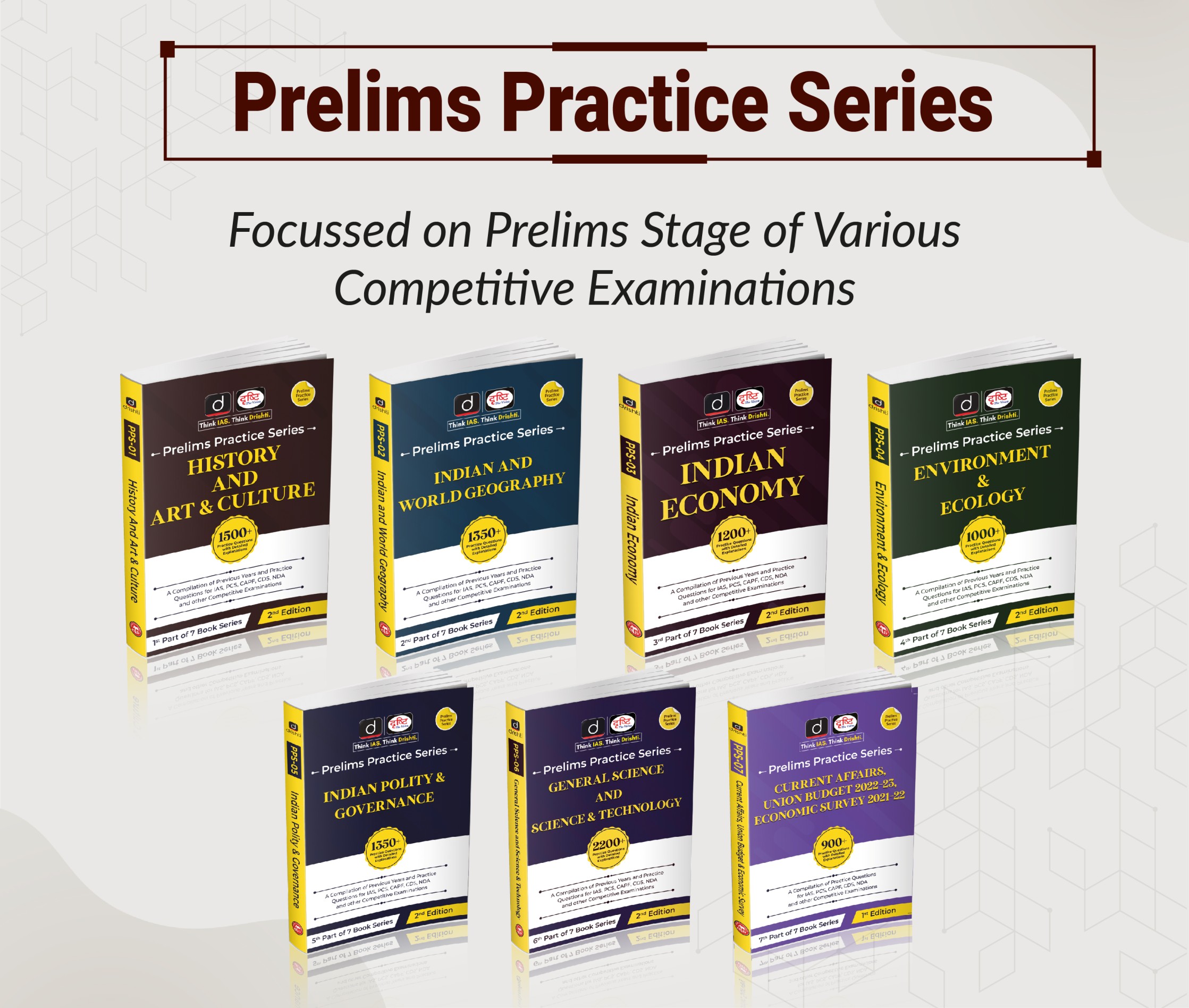
Important Facts For Prelims
D.Y. Chandrachud: 50th Chief Justice of India
Why in News?
Justice Dhanajaya Yeshwant Chandrachud was appointed as the 50th Chief Justice of India (CJI) succeeding the 49th CJI Uday Umesh Lalit.
- Justice Chandrachud will have a relatively longer tenure of two years and is due to retire on 10th November, 2024.
What are the Key Facts about Chief Justice of India (CJI)?
- Qualifications:
- The CJI should be a citizen of India.
- He/She should:
- Have been for at least five years a Judge of a High Court or of two or more such Courts in succession or
- Have been for at least ten years an advocate of a High Court or of two or more such Courts in succession, or
- Be, in the opinion of the President, a distinguished jurist.
- Appointment of the CJI:
- The CJI and the Judges of the Supreme Court (SC) are appointed by the President under clause (2) of Article 124 of the Constitution.
- As far as the CJI is concerned, the outgoing CJI recommends his successor.
- The Union Law Minister forwards the recommendation to the Prime Minister who, in turn, advises the President.
- SC in the Second Judges Case (1993), ruled that the senior most judge of the Supreme Court should alone be appointed to the office of the CJI.
- The SC collegium is headed by CJI and comprises four other senior most judges of the court.
- The collegium system is the system of appointment and transfer of judges that has evolved through judgments of the SC (Judges Cases), and not by an Act of Parliament or by a provision of the Constitution.
- Administrative Powers of CJI (Master of Roster):
- It is common to refer to the office as primus inter pares – first amongst equals.
- Besides his adjudicatory role, the CJI also plays the role of the administrative head of the Court.
- In his administrative capacity, the Chief Justice exercises the prerogative of allocating cases to particular benches.
- CJI also decides the number of judges that will hear a case.
- Thus, he can influence the result by simply choosing judges that he thinks may favour a particular outcome.
- Such administrative powers can be exercised without collegial consensus, and without any stated reasons.
- Removal:
- He/She can be removed by an order of the President only after an address by Parliament has been presented to President.
- This should be supported by a special majority of each House of Parliament (i.e., by a majority of the total membership of that House and by a majority of not less than two-thirds of the members of that House present and voting).
- Grounds of Removal: Proved misbehaviour or Incapacity (Article 124(4)).
- He/She can be removed by an order of the President only after an address by Parliament has been presented to President.
- Recent Development:
- In 2019, the SC ruled that the office of Chief Justice of India (CJI) comes under the purview of the Right to Information (RTI) Act, 2005.
UPSC Civil Services Examination, Previous Year Question (PYQ)
Q. With reference to the Indian judiciary, consider thefollowing statements: (2021)
- Any retired judge of the Supreme Court of India can be called back to sit and act as a Supreme Court judge by the Chief Justice of India with the prior permission of the President of India.
- A High Court in India has the power to review its own judgement as the Supreme Court does.
Which of the statements given above is/are correct?
(a) 1 only
(b) 2 only
(c) Both 1 and 2
(d) Neither I nor 2
Ans: (c)
Exp:
- As per Article 128 of Indian Constitution, the Chief Justice of India may at any time, with the previous consent of the President, request any person to sit and act as a Judge of the Supreme Court with the following qualifications:
- Who has held the office of a Judge of the Supreme Court. Hence, statement 1 is correct.
- Who has held the office of a Judge of a High Court and is duly qualified for appointment as a Judge of the Supreme Court.
- Being a Court of Record, the High Court can review its own judgments under Article 226 of the Constitution of India. Similarly, under Article 137, the Supreme Court shall have the power to review any judgment pronounced or order made by it. Hence, statement 2 is correct.
- Therefore, option C is the correct answer.


Important Facts For Prelims
India’s First Aluminum Freight Rake
Why in News?
Recently, Union Minister for Railways inaugurated India’s First Aluminum Freight Rake named - 61 BOBRNALHSM1 at Bhubaneswar Railway Station.
What is the Significance of Aluminum Freight Rake?
- Improve Make in India Programme: This is a dedicated effort for the Make in India program as it has been fully designed and developed indigenously in collaboration with RDSO, HINDALCO and Besco Wagon.
- Reduce Carbon Footprint: It will reduce carbon footprint as lower consumption of fuel in empty directions and more transport of freight in a loaded condition. As a single rake can save over 14,500 tonnes of carbon dioxide over its lifetime.
- As per an estimate, around 15 million tonnes of carbon emissions can be saved in a year even if just 5% of the 2 lakh railway wagons that the Central government plans to introduce are aluminum-made.
- Reduce Imports: The iron industry consumes a lot of Nickel and Cadmium which comes from imports. So, a proliferation of Aluminum wagons will result in less import. At the same time, this is good for the local aluminum industry
- Consumes Less Energy: The new aluminum rakes are reportedly 180 tonnes lighter than the current steel rakes. The carrying capacity of the new design is said to be 5%-10% more than their steel counterparts. More importantly, they consume less energy with relatively negligible wear and tear to rolling stock and rails.
- Net Zero Carbon Emission: it would help the Indian Railways to achieve net zero Carbon Emissions by 2030 to become the world’s largest Green Railway.



